So, you may have heard rumors about Hindu (Indian) Weddings – and I want to let you know the rumors are true. Indian weddings are extravagant, insanely beautiful, and go on for multiple days. Read on to learn more about the different wedding events.
Sangeet Ceremony
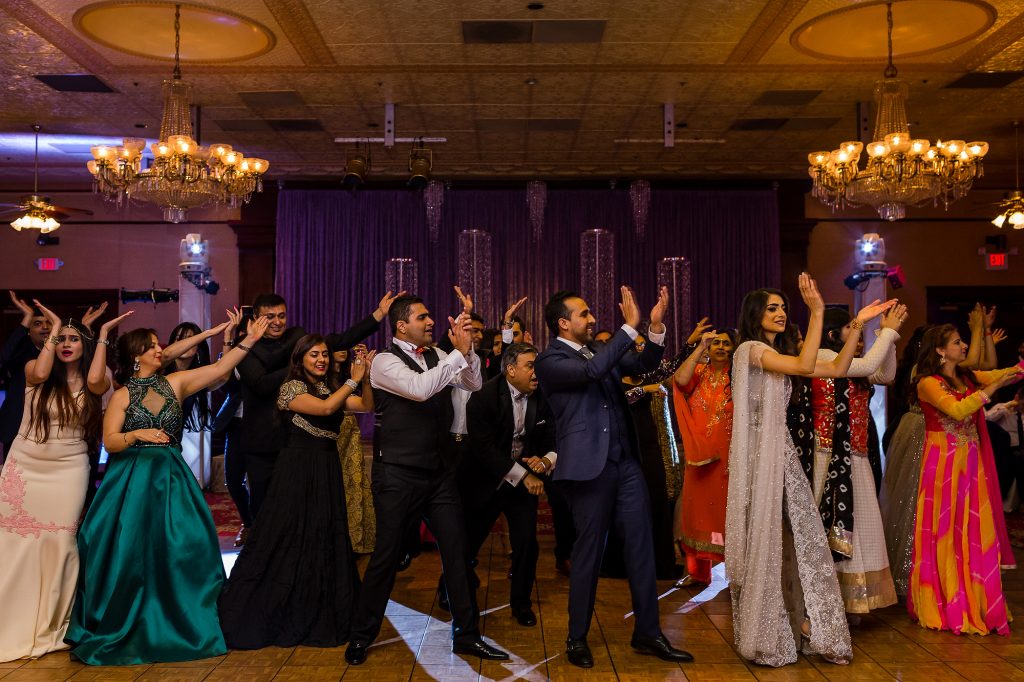
What should I expect during the night?
The Sangeet ceremony is usually celebrated within North India and is known to be the most fun night of the wedding weekend, filled with singing and dancing. This bright, festive celebration usually consists of family members and close friends coming together and performing choreographed Bollywood dances for the couple (see here for an example). As with most events, expect tons of food, alcohol, and dancing.
What is the main highlight of the evening?
Other than the bride and groom performing a dance for the guests, sometimes this event is combined with the Sagai, or the Ring Ceremony, which could happen up to months before the wedding. Yes – this is where the couple exchanges their engagement/wedding rings. Traditionally, marriages have been arranged and there is no concept of the to-be groom getting on one knee and professing (or in my case, stuttering) his love for you. These events could be combined for many reasons (i.e., financial, timing, or when out-of-town family can attend). Additionally, some couples also combine the Sangeet with the Mehndi for the same reasons, detailed below.
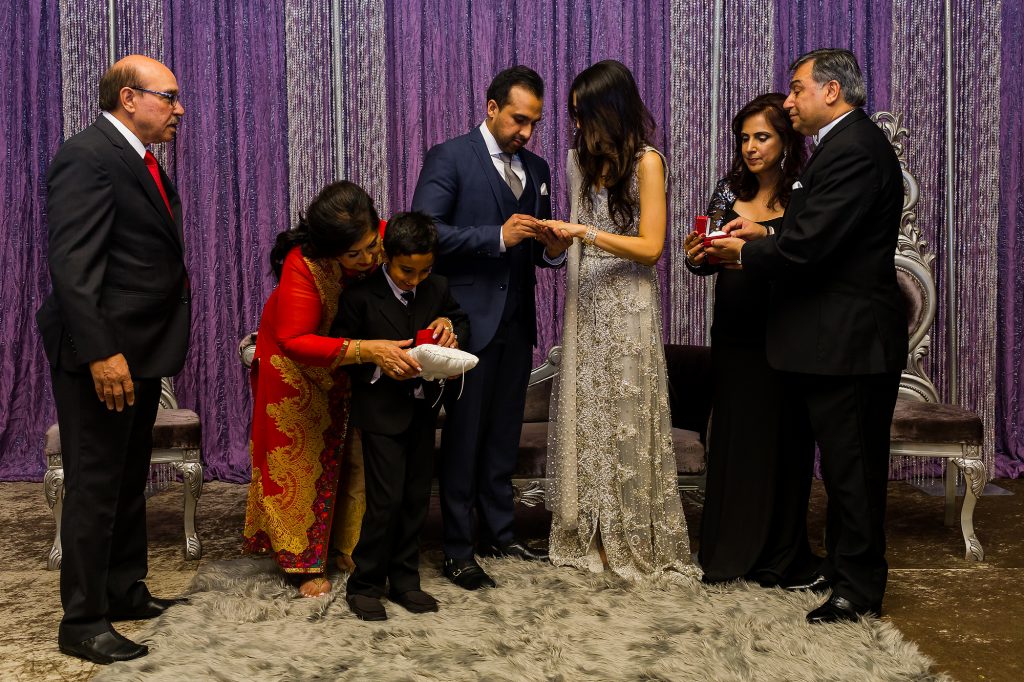
What should I/we wear?
Most women will usually be dressed in Indian clothes or “Indo-western” outfits (Google: sari gown). Men will most likely wear suits (jacket optional), unless they’re immediate family members, in which they’ll wear a Sherwani or Pajama Kurta. If you’re wondering, we also encourage your brother/friend/significant other to also wear an Indian outfit – talk about your most liked Instagram picture. Read more about men’s Indian outfits here.
The Mehndi Ceremony
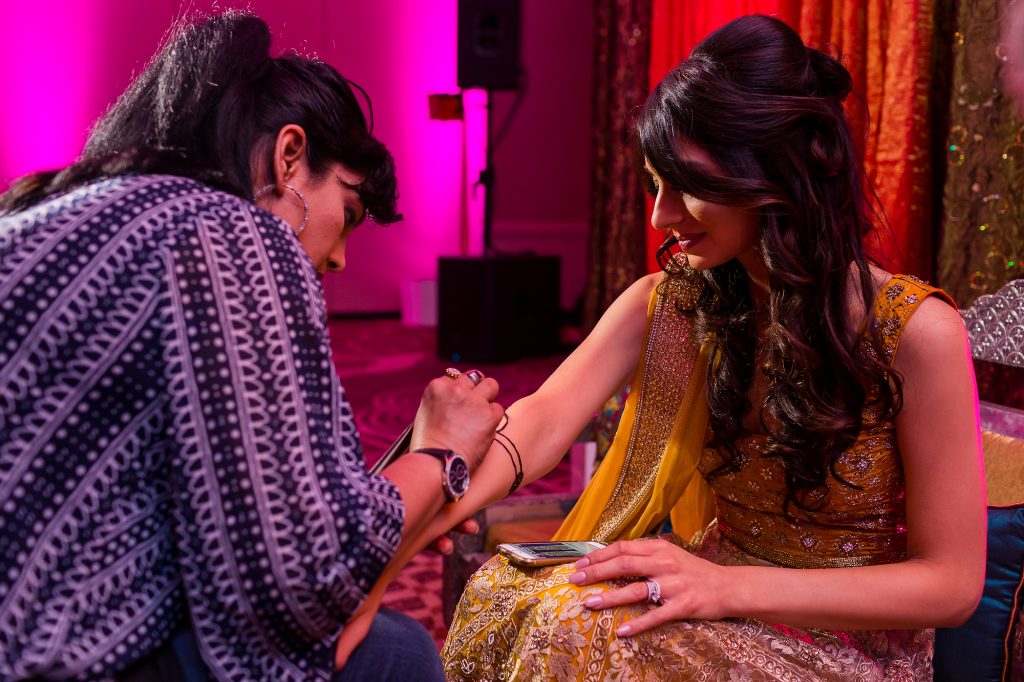
Why is it called a Mehndi Ceremony?
The Mehndi is a colorful bridal shower for women on the bride’s side of the family that takes place the night before the wedding. Usually, a professional mehndi artist spends hours applying intricate designs on the bride’s hands and feet during the ceremony (and in some cultures, a simple design on the groom’s hands as well). Hindu tradition states that the deeper the bride’s mehndi (also called henna), the happier their marriage will be. Designs vary and sometimes, the groom’s name or initials are hidden in the intricate design.
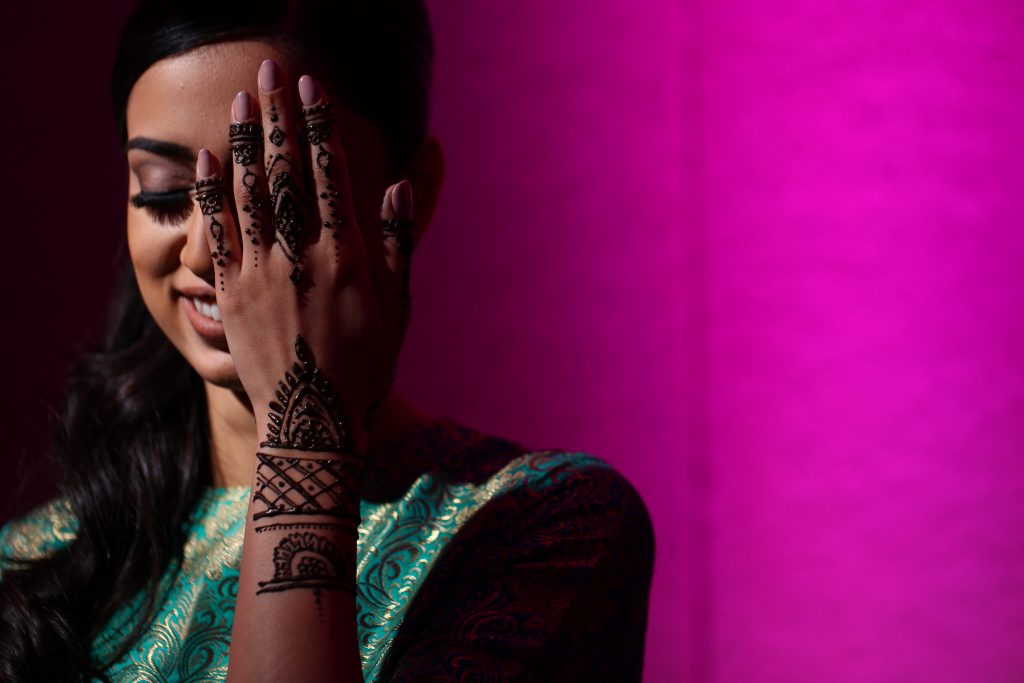
Do guests also get to apply henna?
Yes! Usually, there are more artists at the event if the guests also want to apply henna. You get to pick where you want the henna to be applied (i.e., both palms, back of hands, only one hand, etc), but don’t hog the artist since others are probably just as excited as you are!
*If you’ve never had henna applied to your hands before, read below for some insider tips:
- Use the restroom before you sit down to get your henna done. This is because henna takes over an hour to dry and will most definitely stain your clothes if you’re not careful.
- What everyone tells you to do after an hour: Don’t force the henna to come off and do your best not to wash your hands until the next morning if you’d like to get the ideal deep, red stain (Aunty tip: wrap a plastic bag on your hand so you don’t ruin your bed sheets).
- What I do after an hour(if you have no patience and have a bladder of a pregnant woman): Find a knife and sneak to the bathroom, scrape off the dried henna in the trashcan. Wash hands. Pee. Dance the night away without worrying about staining your clothes. (Pro tip: your henna will darken overnight and will still look great for the day of the wedding, so don’t worry about how dark it can get!)
- Only get henna applied to one hand (palm and/or back of hand) if you plan on holding a glass of wine/your phone/husband’s hand in the other.
- After a few days, henna becomes this patchy, light orange color. You don’t need to wait for this to naturally fade away. To remove, rub away the henna with cotton balls soaked in makeup remover.
What should I/we wear?
This event is meant to be bright and festive – wear bright colors (stay away from white or black)! If you plan on having henna applied on your hand(s), wear your sleeveless or short sleeve option. If men are invited, we recommend chinos, a button down, and a tie (optional).
Wedding & Reception
Break this down for me. What should I expect?
Processional
The Baraat is the men’s processional, which happens before the bride gets to the venue. Usually, the groom rides in on an elephant, horse, or car with a long line of his friends and family dancing, singing, and hyping him up as they make their way to the wedding altar (called the mandap). It’s normal to hire live musicians playing the dhol (watch video here).
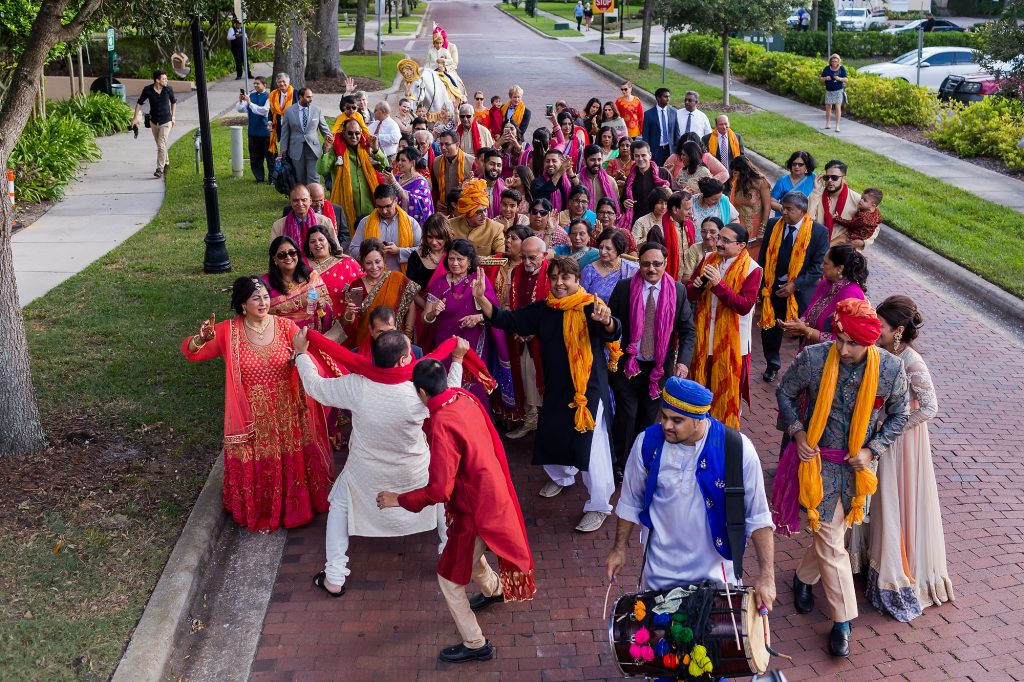
Since the bride’s parents are already at the mandap, the bride usually comes down the aisle with her maternal uncle. Both families then welcome each other and exchange flower garlands, symbolizing their acceptance of each other.
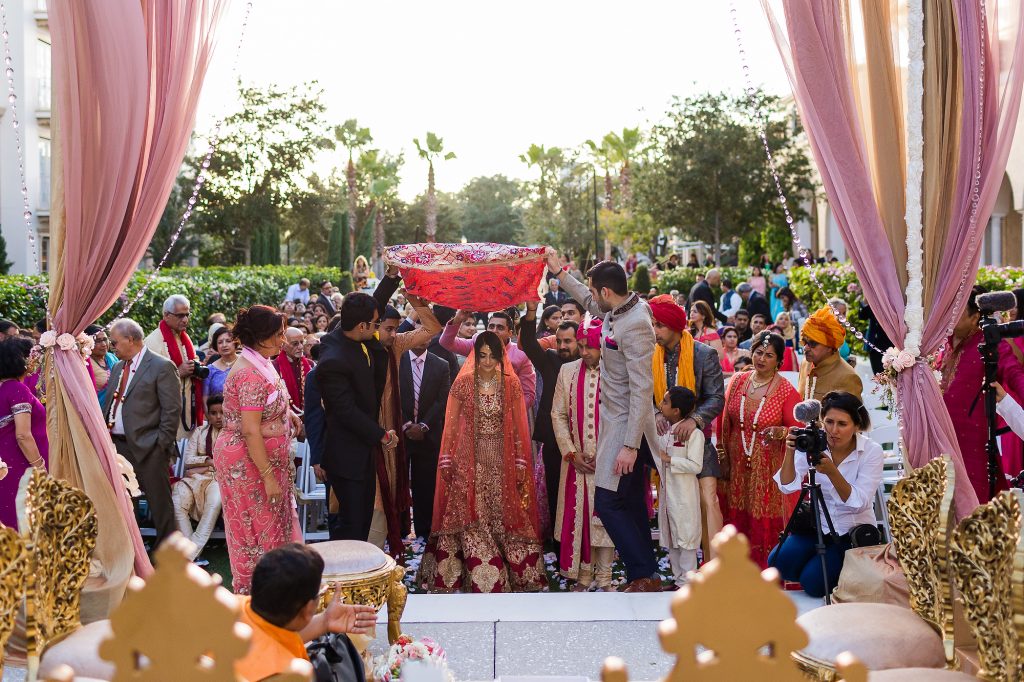
Ceremony
The wedding ceremony (usually outdoors) takes place under the canopy, which each of the four pillars representing the bride and groom’s parents. The ceremony can vary in length, anywhere from 30 minutes to a few hours; it is up to the couple and their parents to let the priest know how long they’d like this to be. If a few hours, the couple will have snacks available during the ceremony so guests can freely get up, eat, and chat with one another. Ideally, there is a program on the seats so you know what to expect.
To begin, the priest, couple, and couple’s parents are usually seated under the mandap around a small fire (ceremonial pit). The bride’s brother also plays a role in this by handing the couple rice which gets thrown in the fire as the priest performs the ceremony. The fire symbolizes the god Agni, the “god of fire,” who is said to sustain life and thus give life to the marriage.
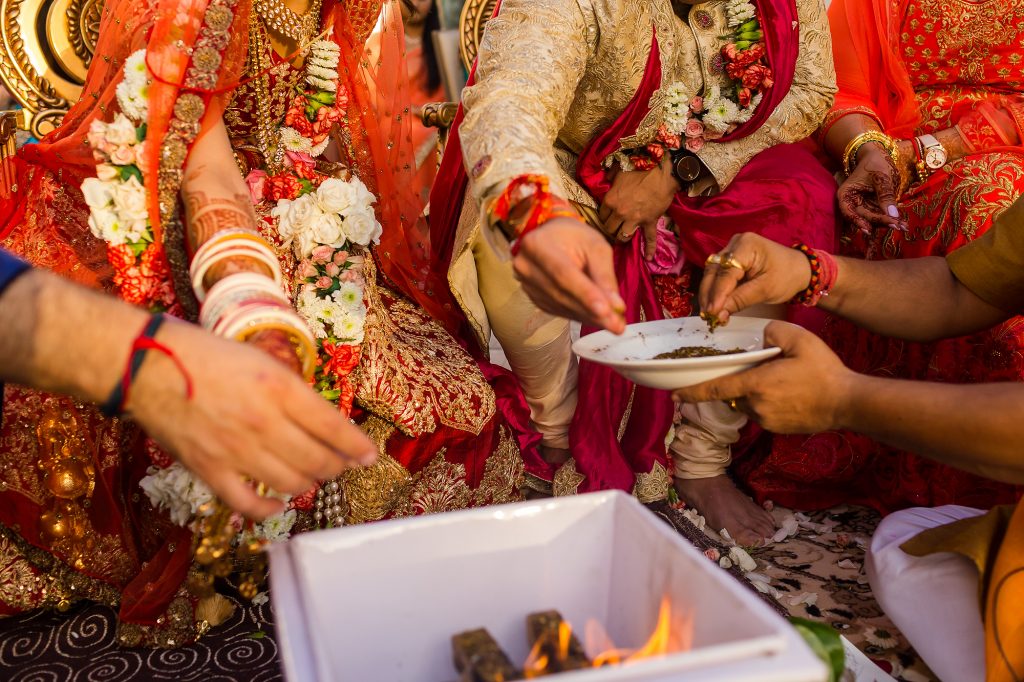
The priest will then tie the couple’s scarves together and they will around the fire four times, representing mortality, prosperity, personal gratification, and spirituality. Seven steps are taken to symbolize their vows.
Lastly, the groom will put red powder on the bride’s forehead and then place a marriage necklace around her (called the mangalsutra), officially ending the wedding ceremony. Family and friends will then throw petals at the couple to congratulate the couple.
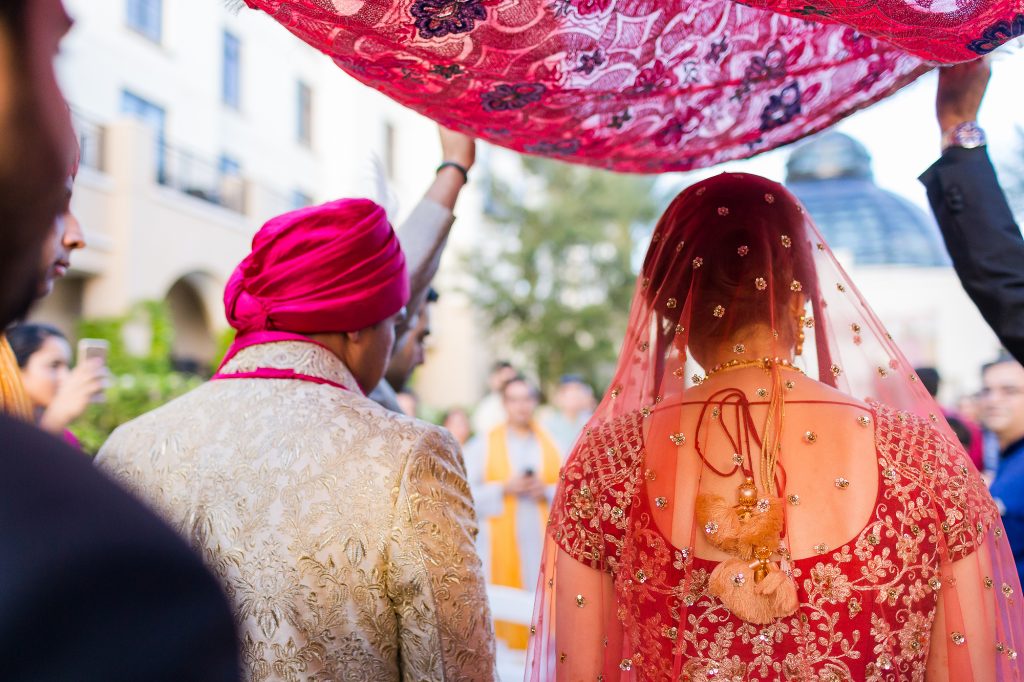
Reception
During the wedding reception, the couple is announced and makes their way to a raised stage in the banquet hall, where they’ll be seated for most of the night. Guests can come up to congratulate them and take a picture with the couple. Most likely, there will be a few toasts and maybe even a father daughter dance.
As usual, there will be an abundance of food! Expect live stations and overwhelming buffets. Unlike other wedding events, the wedding day is religious, so meat and alcohol may not be served. Since the reception usually takes place at a hotel, you’re welcome to grab a drink from the hotel bar or bring your own flask.
So the bride wears red… what does that mean for me?
If the reception is separate from the wedding ceremony, we’d recommend wearing an Indian outfit that’s less dressy than the reception outfit. If the reception follows the wedding ceremony, we’d recommend wearing one of the fancier of your outfits (the more beadwork, the better). Stay away from black, red, and white for the ceremony itself.
Wait, why can’t I wear black or white?
Note that Indians wear white to funerals as opposed to black like most non-Indians. You’re welcome to wear white to other wedding events, but for the ceremony itself, I’d stay away. Black on the other hand, has no real reason. Indians tend to wear lighter colors to the Temple, and since the wedding ceremony is religious, we wouldn’t recommend black. If, however, you’re changing after the ceremony, feel free to wear black or white to the reception.
Tell me more about men’s outfits.
A suit and tie is more than perfect! Feel free to have your plus one match the color of your sari.
For the most important question – which sari should I wear to each of these events?!
Fortunately, we’ve already done the hard word for you — you’re able to filter out our sari collection by occasion (Sangeet, Mehndi, and Wedding). Spend at least $75 to receive 10% off your order with discount code SPEND75.
*All photos used in this post are taken by Jhankarlo Photography.